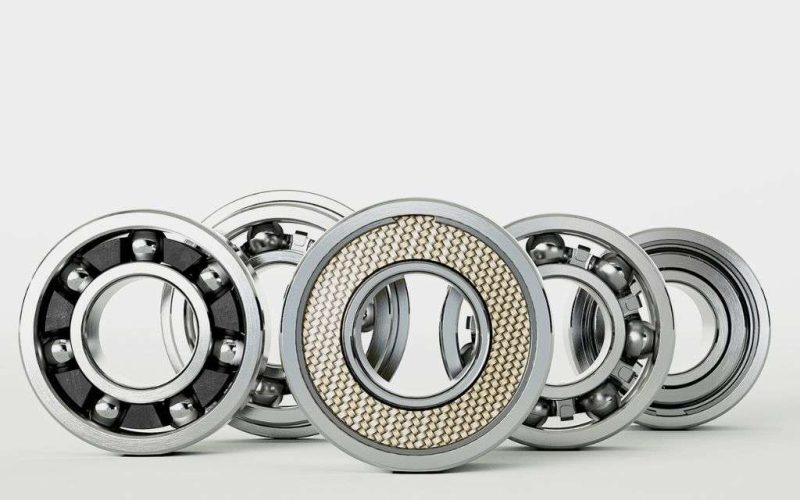Table of Contents
Categories
-
Adapter Sleeves (9)
-
Ball Bearings (11)
-
Ball Screw Bearings (2)
-
Ceramic Bearings (27)
-
Pillow Block Bearings (4)
-
Plain Bearings (32)
-
Roller Bearings (12)
-
Slewing Bearings (43)
-
Sliding Block (3)
-
Stainless Steel Bearings (27)
-
Super Precision Bearings (6)
-
Thin Section Bearings (9)
-
Track Rollers (4)
-
Universal Joints (1)
An Overview Of Bearing Vibration Analysis
Introduction
Bearing vibration analysis is a critical tool for monitoring the health of rotating machinery. By measuring the vibration of a bearing, it is possible to detect early signs of wear and damage, and take action to prevent a catastrophic failure.
There are a number of different ways to measure bearing vibration, but the most common method is to use an accelerometer. An accelerometer is a device that measures the acceleration of a vibrating object. When attached to a bearing, the accelerometer can measure the vibrations caused by the bearing’s rotation.
The vibration of a bearing can be expressed in terms of its amplitude and frequency. The amplitude is the maximum displacement of the bearing from its equilibrium position, and the frequency is the number of times per second that the bearing vibrates.
The amplitude and frequency of bearing vibration can provide valuable information about the condition of the bearing. For example, a high amplitude indicates that the bearing is worn or damaged, while a high frequency indicates that the bearing is rotating too fast.
Bearing vibration analysis can be used to identify a number of different problems, including:
- Bearing wear
- Bearing damage
- Improper lubrication
- Misalignment
- Unbalance
By identifying these problems early, it is possible to prevent a catastrophic failure and keep your machinery running smoothly.
How To Perform Bearing Vibration Analysis
Key parameters for bearing vibration analysis
amplitude:
- Normal Vibration: Periodic oscillations within acceptable limits.
- Unusual Vibration: Unusual spikes or fluctuations that indicate a possible problem.
frequency:
- Expected frequency: An identifiable frequency based on bearing design.
- Abnormal frequencies: Unexpected vibrations indicate defects or wear.
Acceleration:
- Acceleration spike: A sudden increase that points to a serious problem.
- Sustained acceleration: Steady acceleration within a tolerable range.
Bearing vibration analysis can be performed using a variety of different tools and techniques. The most basic method is to use a handheld vibration analyzer. A vibration analyzer is a device that measures the vibration of a machine and displays the results in a graphical format.
Handheld vibration analyzers are relatively inexpensive and easy to use, making them a good option for small businesses and individuals. However, handheld vibration analyzers are not as accurate as more sophisticated equipment.
For more accurate results, it is best to use a vibration analysis system. A vibration analysis system consists of a vibration sensor, a data acquisition system, and a software program. The vibration sensor is attached to the bearing, the data acquisition system records the vibration data, and the software program analyzes the data and displays the results.
Vibration analysis systems are more expensive than handheld vibration analyzers, but they are more accurate and provide more detailed information. Vibration analysis systems are typically used by larger businesses and organizations that have a lot of rotating machinery.
Interpretation Of Bearing Vibration Results
The interpretation of bearing vibration results can be a complex task. However, there are a number of general guidelines that can be followed.
- A high amplitude indicates that the bearing is worn or damaged.
- A high frequency indicates that the bearing is rotating too fast.
- Amplitude and frequency measurements can be used to identify specific problems, such as misalignment or unbalance.
It is important to note that the interpretation of bearing vibration results is not always straightforward. The same vibration pattern can be caused by different problems. Therefore, it is important to have a good understanding of the machinery and the possible causes of vibration before making any conclusions.
Benefits Of Bearing Vibration Analysis
Bearing vibration analysis offers a number of benefits, including:
- Early detection of bearing problems
- Prevention of catastrophic failures
- Reduced maintenance costs
- Improved machine uptime
By monitoring the vibration of your bearings, you can identify problems early and take action to prevent a catastrophic failure. This can save you time, money, and headaches.
References
- 1. More data on “bearing vibration analysis” from NCD Company
- 2. For more data on “bearing vibration analysis”, follow this ;
- 3. Test bearings using “vibration analysis” from RELIABLEPLANT ;





















